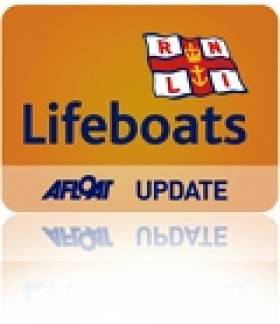Displaying items by tag: RNLB Frank and Ann Wilkinson
Tamar-Class Lifeboat Visits Irish Waters
The Tamar-class lifeboat is the latest in a series of high-tech craft within the RNLI lifeboat fleet and in use throughout the UK. The class is named after the River Tamar, Cornwall and like other lifeboats, they are named after large rivers, writes Jehan Ashmore.
To date 17 Tamar-class boats have been commissioned for the lifesaving institution. Some of the Tamar class fleet are constructed exclusively for the purposes of providing relief-duties across the extensive network of stations. One of these relief lifeboats, RNLB Frank and Ann Wilkinson (16-06) arrived at Dun Laoghaire on 17 July. The relief Tamar's transit took two-days to reach the harbour from the RNLI's headquarters based at Poole. The lifeboat called at Plymouth for bunkers and made an overnight stay at Penlee prior to arriving at Dun Laoghaire, where another fuel-stop was undertaken.
The craft carried-out training exercises in Dublin Bay, which included a couple of trainees from the Dun Laoghaire lifeboat crew. The Tamar class lifeboat was in Irish waters primarly to cater for other station crews within the divisional staff training programme. There are no Tamar-class lifeboats operating in Irish waters, at present, though the RNLI have plans to introduce the class.

Tamar-class relief lifeboat RNLI Frank and Ann Wilkinson (16-06) nearing Dun Laoghaire. Photo © Jehan Ashmore/ShipSNAPS
Related Safety posts
RNLI Lifeboats in Ireland
Safety News
Rescue News from RNLI Lifeboats in Ireland
Coast Guard News from Ireland
Water Safety News from Ireland
Marine Casualty Investigation Board News
Marine Warnings





























































